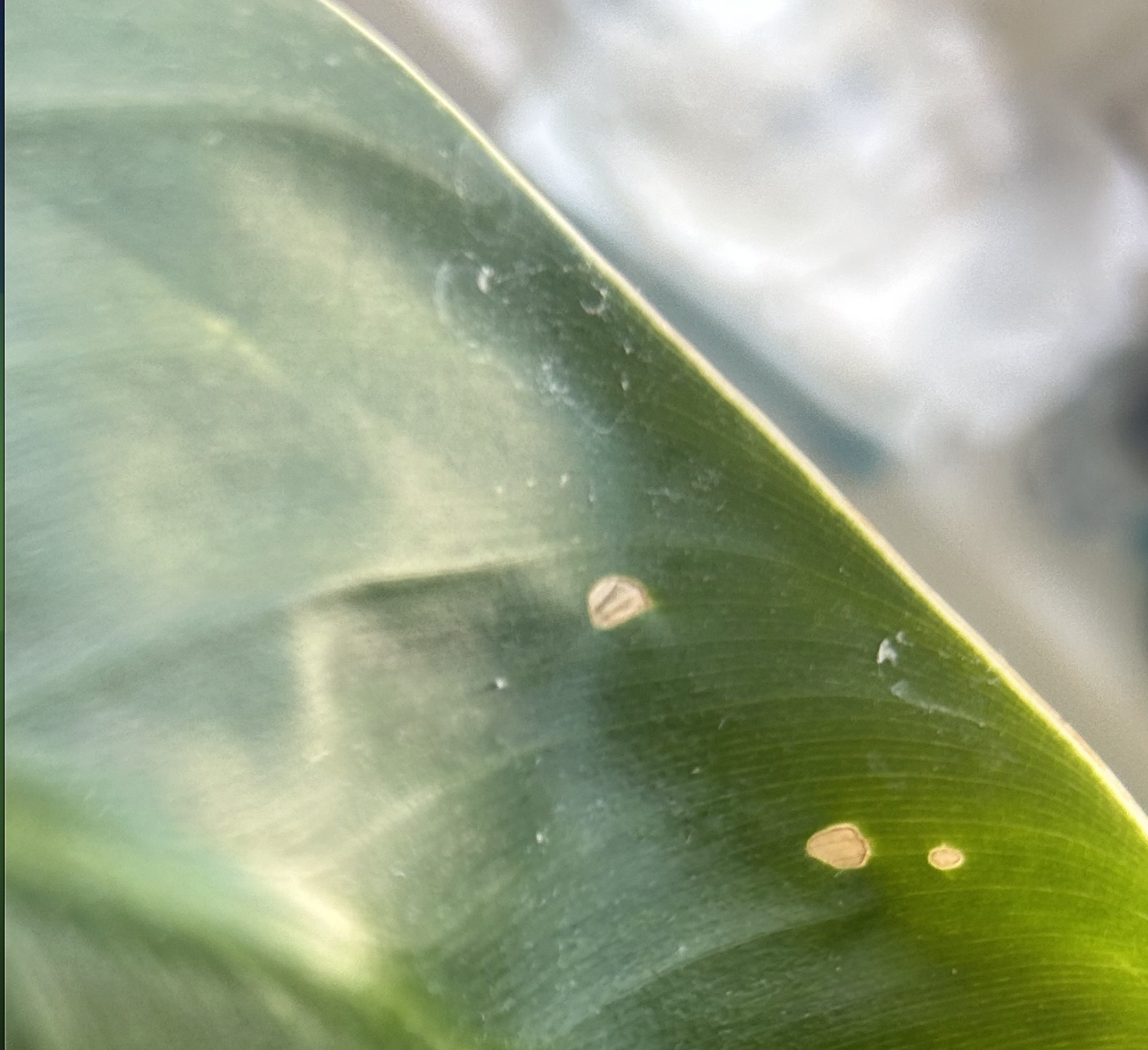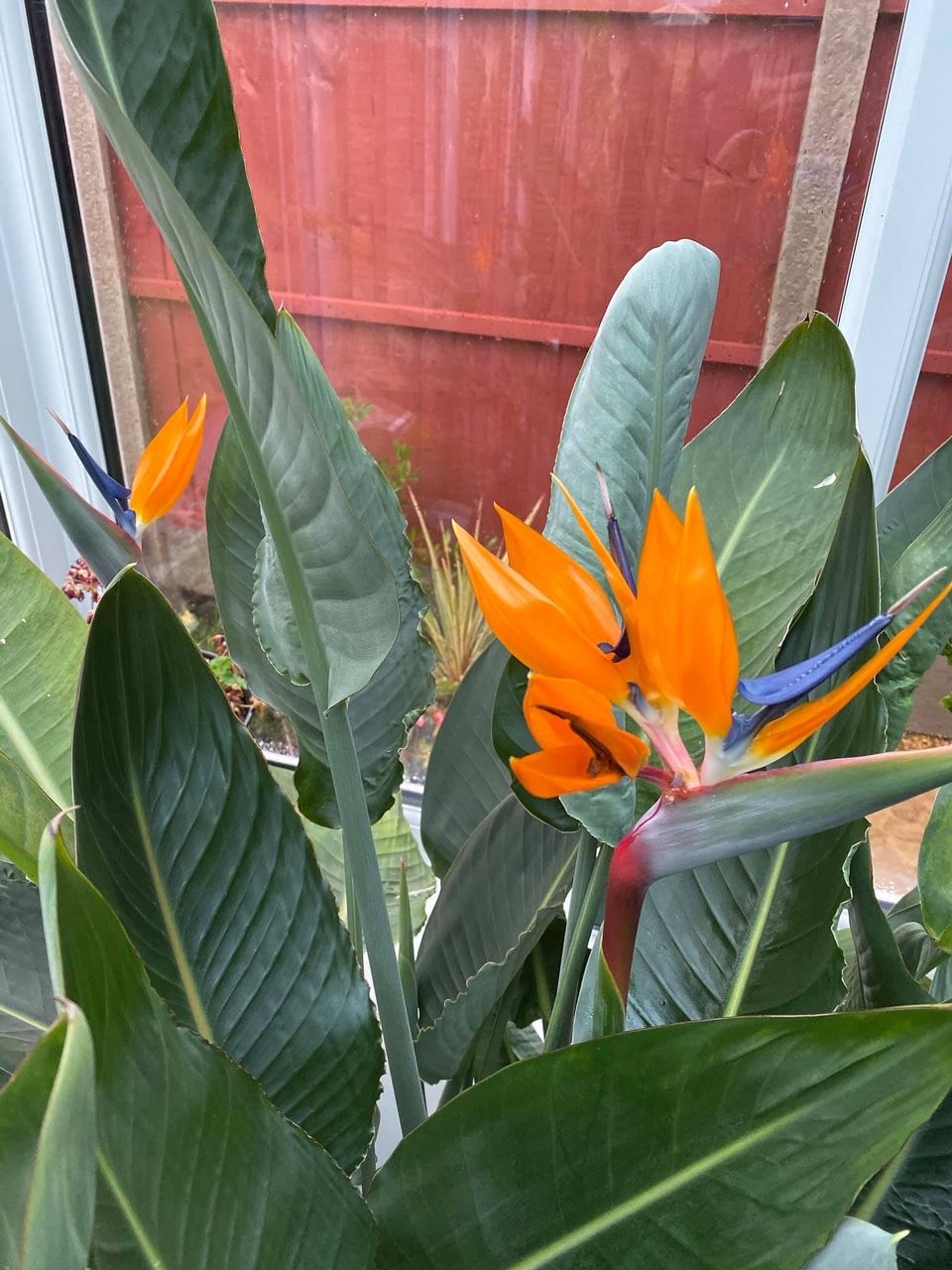
Strelitzia nicolai. Copyright: Thomas Coleclough
Contents
- Top Tips
- Location, Water, Humidity & Fertilisation
- Dormancy Care & Annual Blooms
- Common Issues
- Origins, Temperature, Propagation, Repotting & Toxicity.
Need the answer to a specific plant query? Book a 1-to-1 video call with THE HOUSEPLANT DOCTOR™, the website's friendly author, to overcome and address your niggling problem! Available on iMessage, WhatsApp, Facebook Messenger & more.
Top Tips & Info
- Care Difficulty - Easy
- Provide a few hours of direct sun a day, avoiding excessive sunlight in the height of summer. If it isn’t in a sub-filled environment, as long as a newspaper can be read without the use of a light, you’re good to go.
- It’s important to know that the frequencies of water is directly governed by the amount of light received, too. (darker areas = longer dry spells).
- Allow the top third of the soil to dry out in between waters, reducing this further in the autumn and winter. It's always better to under-water, than over-do it with Strelitzia, purely on the basis of its excellent ability to endure droughts.
- Fertilise using a 'Houseplant' labelled feed every four waters in the spring and summer, reducing this to every six in the colder months.
- Repot every year using a 'Houseplant' or 'Cactus & Succulent' labelled potting mix - this is a good time to propagate basal offshoots that develop around the base. Have a look at our bespoke Bird of Paradise Potting Mix (UK only).
- For specimens that surpass over 1m in height, reduce the amount of waters and surrounding temperature to around 15°C (59°F) during the winter, to help entice flowers in the spring. Read 'Dormancy Care & Annual Blooms' towards the middle of this article for more information!
Location & Light - 🔸🔸🔸🔸
As the genus is a big lover of sun, place them in the brightest room in the house. For those grown in sunny locations, be sure to not under-water too often as irreversible damage may occur in the likes of yellowing or browning of leaves. Sure, they'll adapt to a darker area, but the increased chance of root rot and slower growth isn't worth risking such an expensive specimen.
If you've recently purchased a Strelitzia, chances are it hasn't acclimatised to the potential direct sunlight you'll give it. If you're interested in placing yours in a brighter environment, gradually increase the light levels over the course of a few weeks to prevent the risk of environmental shock or sun-scorch.
Generally speaking, the Strelitzia reginae (orange flowers) is best suited for sunnier rooms and can tolerate both cold and hot climates. The Strelitzia nicolai (white flowers) is best suited for rooms that offer bright light, but only up to a few hours of sunlight per day. This variety also prefers temperatures above 12°C (54°F).
Water - 🔸🔸
During the growing period, allow half of the soil dry out between irrigations, reducing this further in the cooler months. Under-watering is far less damaging than overdoing it, purely on the basis of their ability to endure prolonged droughts. Due to the sensitivity of their root systems, try not to directly apply cold water as this could shock the plant overtime. Under-watering symptoms include curling or yellowing of leaves, a washed-out appearance, dry brown patches and stunted growth. If it has considerable leaf curling, move it to a cooler, slightly darker location and possibly think about a repot. Due to their strong rhizomatous nature, Strelitzia develop prolific root systems that'll quickly fill a pot within several months. Over-watering symptoms include rapidly yellowing leaves, stunted growth, and severe wilting caused by root rot. These issues could be down to an array of care faults; a too dark location, a pool of water to accumulating beneath the pot, an incorrect soil type or an over-potted plant. For those that sit in soggy soil and have wilting leaves, the following link will have lots of information about how to address root rot.
Humidity - 🔸
Moderate humidity accompanied by good air circulation is a must; finely mist the foliage once every ten days for those situated near a radiator. Placing the plant's base on a pebble tray will not only provide a stable level of humidity, but it'll also reward you with more reliable growth during the colder months when the heaters are operating.
Fertilisation - 🔸🔸
Fertilise your plant with 'Houseplant' labelled fertiliser every four waters in the growing period before reducing this to every sixth drink over the autumn and winter. Whilst the specimen is in bloom, switch to a product high in potassium to prolong the duration of flowers - a good example of this would be a 'Poinsettia' or 'Tomato' labelled feed. Although a general plant fertiliser is acceptable, you'll run the risk of burning the roots if over-applied, especially with the combination of a 'ready-to-use' product and dry soil.
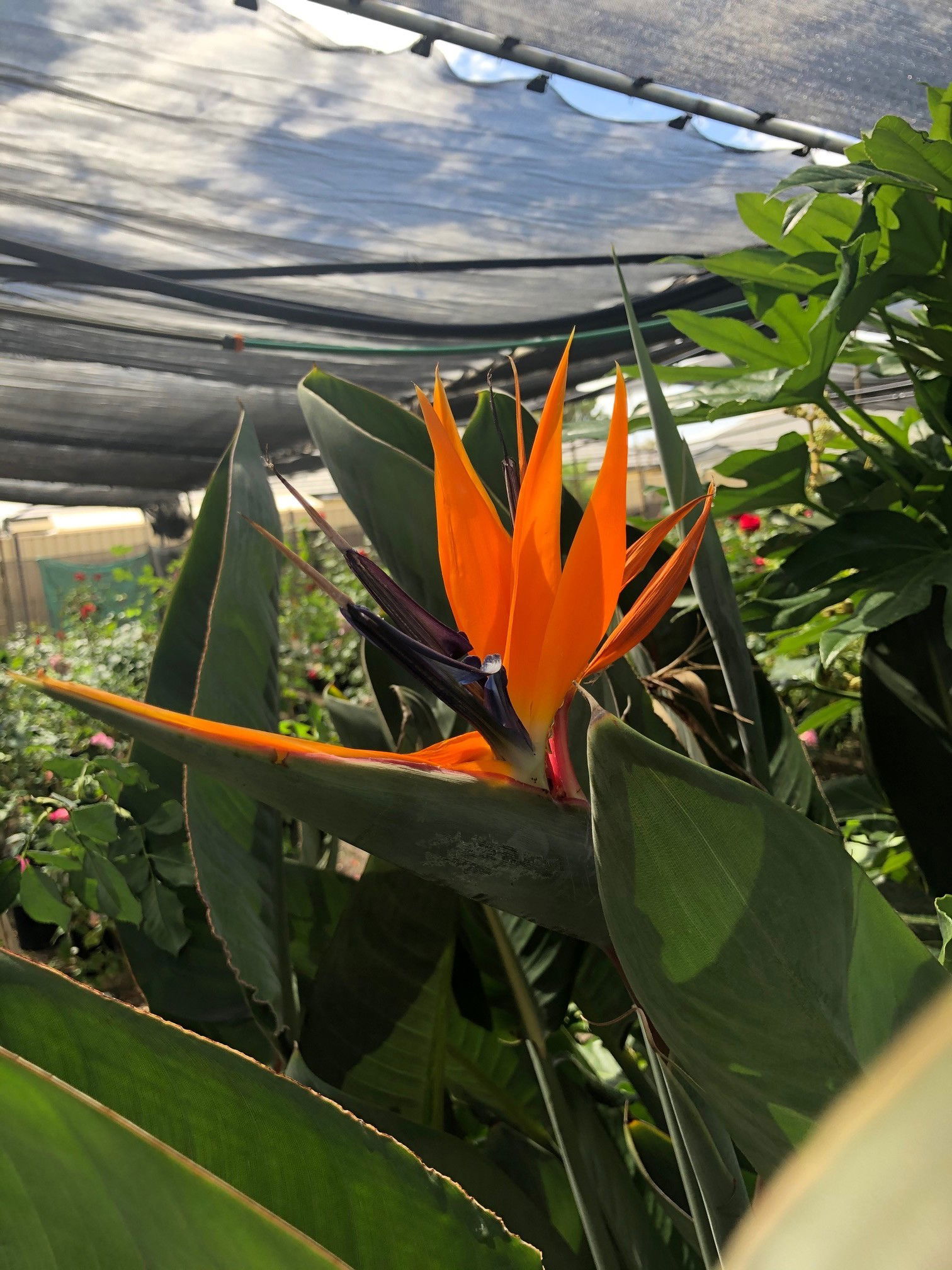 The inflorescence of Strelitzia reginae.
The inflorescence of Strelitzia reginae.
Dormancy Care & Annual Blooms
Mature specimens (six years +) will eventually bloom during spring to summer if its previous dormancy period has been served well in winter. As ukhouseplants has been challenged many times on this subject, we've created an acronym to help you through this process; SHORT. The combination of persistent droughts, cooler temperatures and long nights during winter will all contribute to the flowering process that'll take place in the following summer (sometimes spring). Repotting isn't mandatory, and instead might hurt the chances because of transplant shock.
The following steps must only be taken from late autumn to early spring to provide the best chances of flowers.
Sunlight
Provide a brightly lit location with a few hours of sunlight during the cooler months. Never situate a Strelitzia in a shady location that's difficult to read a newspaper, as this will only hurt the chances of a bloom. Dust and mist the foliage from time to time whilst the heaters are on to counteract browning leaf-tips.
Hydration
Reduce irrigations so that the soil becomes fully dry for around a week to reduce the chance of root rot and replicate its dormancy period. Either check the weight of the pot or place a finger in the compost to regulate the soil moisture.
Occasional Feeds
One or two feeds during this period using 'Houseplant' fertiliser is all that is needed to supplement Strelitzia, as too nutritious soil may reduce the chance of a bloom.
Reduce Everything
This one is to remind you that everything needs to be reduced - especially the temperature and irrigations.
Temperature
Reduce the temperature by around 5℃ or place in a room which is within 15℃ - 18℃ (59 - 65℉). As most houseplants are sensitive to temperature change, it cannot be empathised how important this step is to replicate their dormancy period. If all of the steps are fulfilled, a mature Strelitzia could produce beautiful influences in late spring to summer.
| Time of Year | Care Requirements |
| January & February | Resting/Dormancy Period. Reduce irrigations & fertilisation. |
| March | End of Resting/Dormancy Period. Increase waters & feed using a nitrogen-based fertiliser at monthly intervals. |
| April | Pre-Flowering Period. Use a potassium-based feed fortnightly during this period; water once the top third of the soil dries out. |
| May & June | Flowering Period. Maintain moist soil & fortnightly potassium-based feeds. |
| July | End of the Flowering Period. Gradually decrease both water & nutrient intake in the soil. Remove spent flowers as they wilt. |
| August & September | Water once the top third of the soil dries out; supplement using houseplant feed or a general plant fertiliser, at monthly intervals. |
| October - December | Resting/Dormancy Period. Reduce irrigations & fertilisation. |
Common Issues with Strelitzia
Curled leaves with crispy brown patches are the result of too little water and over-exposure to the sun. Although Strelitzia are a superb choice for plants in sunny locations, those that haven't acclimatised to the harsh rays will show signs of sun-scorch and environmental shock. Gradually increase the amount of light every few days, starting from an indirect location to a few hours of morning/evening sun over the course of a few weeks.
Prolonged exposure will significantly speed the process of dehydration, so consider transplantation into a bigger pot (in any season) to wrap the roots around moister soil.
 Here's the difference between a healthy root and a dying one.
Here's the difference between a healthy root and a dying one.
Root Rot (pictured above) is a common issue with specimens sat in too moist or waterlogged soil for long periods of time. Symptoms include rapidly yellowing leaves, stunted growth and stem collapse. Take the plant out of the pot and inspect health below the soil line. If the roots sport a yellow tinge, you're good to go, but if they're brown and mushy, action must be taken immediately. More information about addressing root rot can be found on this link.
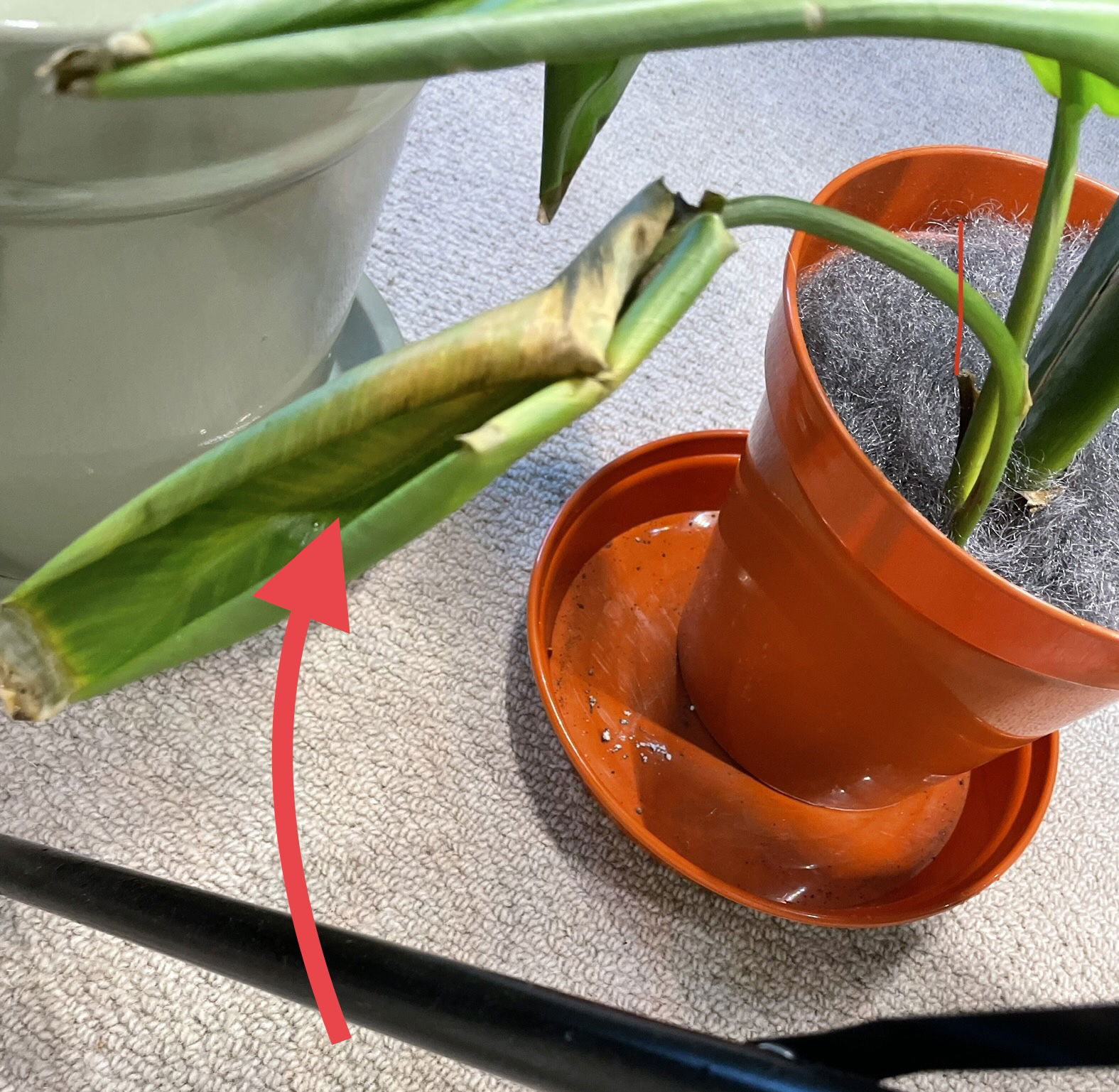 Severe leaf-curling on ALL leaves is usually down to one of two issues; plant dehydration or transplant shock. We recommend watering the plant and waiting around three days to see if the problem subsides. If it doesn't, have a look at its root system for signs of root rot, as it'll almost identical to severe dehydration (the plant can't absorb moisture and therefore begins to wilt like its dehydrated). If the roots look rotten like the image above, click on that link. For Bird of Paradise that are now wilting shortly after being repotted, the best course of action is to leave it; don't repot the roots as it may cause further disturbance, increasing the risk of plant death.
Severe leaf-curling on ALL leaves is usually down to one of two issues; plant dehydration or transplant shock. We recommend watering the plant and waiting around three days to see if the problem subsides. If it doesn't, have a look at its root system for signs of root rot, as it'll almost identical to severe dehydration (the plant can't absorb moisture and therefore begins to wilt like its dehydrated). If the roots look rotten like the image above, click on that link. For Bird of Paradise that are now wilting shortly after being repotted, the best course of action is to leave it; don't repot the roots as it may cause further disturbance, increasing the risk of plant death.
Pests could arise at any time, with infestations starting from the original nursery or via contamination in your home. With Strelitzia, Spider Mites and Mealybugs tend to be the usual inhabitants, with the first being minute and almost transparent, roaming the leaves in search of chlorophyll and a site to hide its eggs. The latter, however, will stand out much more, with white cottony webs developing across the foliage and stems. Thoroughly check the plant's cubbyholes before giving it the all-clear, or click on the appropriate links to learn more about eradicating these issues.
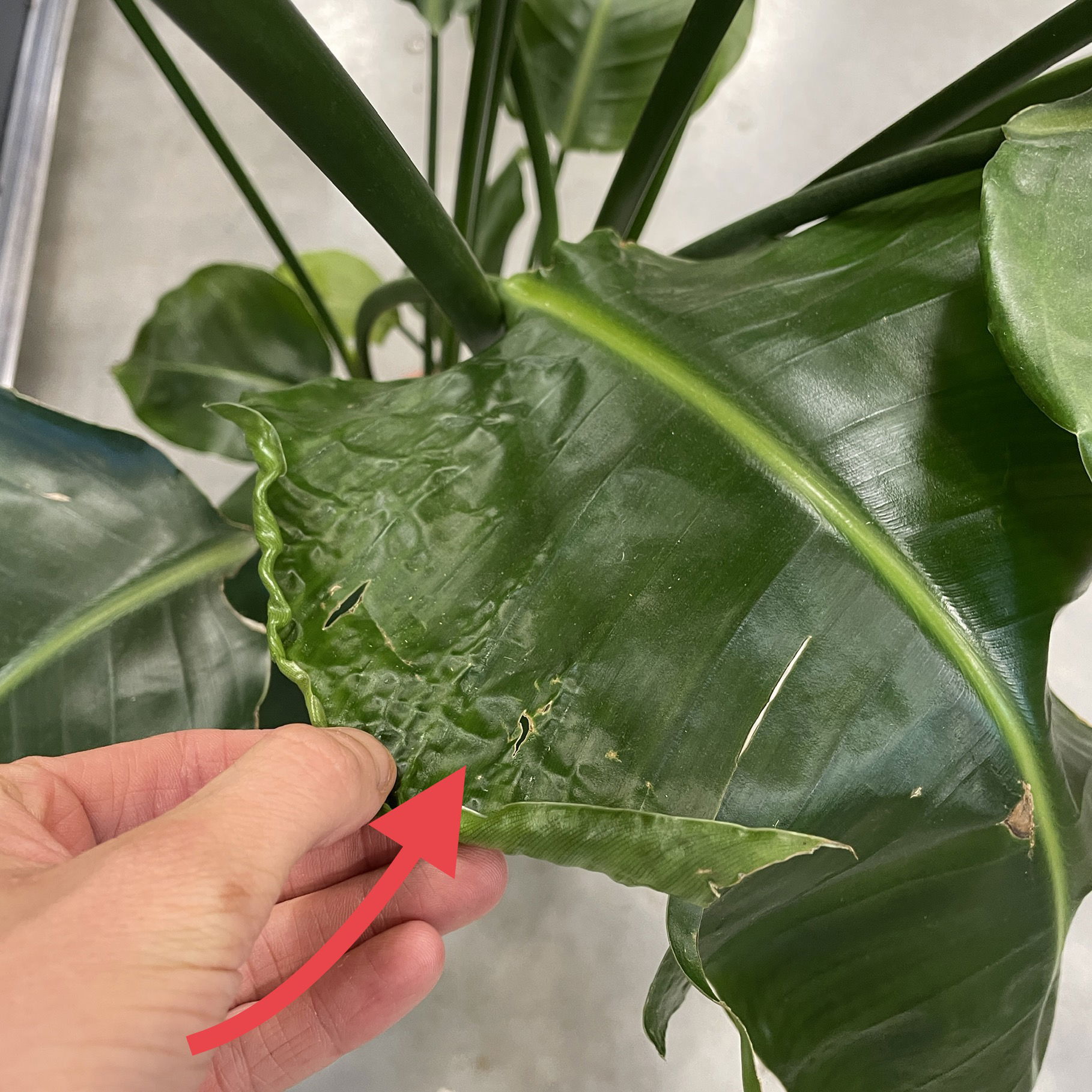 Although this may look serious, crinkled leaves are nothing to worry about and is most likely to be caused by damage when the leaf was still developing!
Although this may look serious, crinkled leaves are nothing to worry about and is most likely to be caused by damage when the leaf was still developing!
Due to the genus' sensitivity to chemicals, Leaf Shine shouldn't be used to improve the appearance of the foliage, and instead should be cleaned using warm soapy water. Failure to do so may cause yellowed, mottled spots that cannot be undone.
Similarly to crinkled or ripped leaves, white chalky dust that cover parts of the leaf is also nothing to worry about. This could be marks from guttation (moisture discharge in the leaf) or residue from the plant being misted with water. Simply wipe the leaves with a damp cloth of warm water to remove the markings. Note: Be mindful of Mealybugs that may look similar; click here to see symptoms of this pest.
A lack of blooms could be due to an array of different issues, including irregular watering habits, too little light and a lack of fertilisation. Strelitzia will only flower once maturity is achieved, and as it'll take many years for it to reach adulthood, you'll have to wait a while for a development.
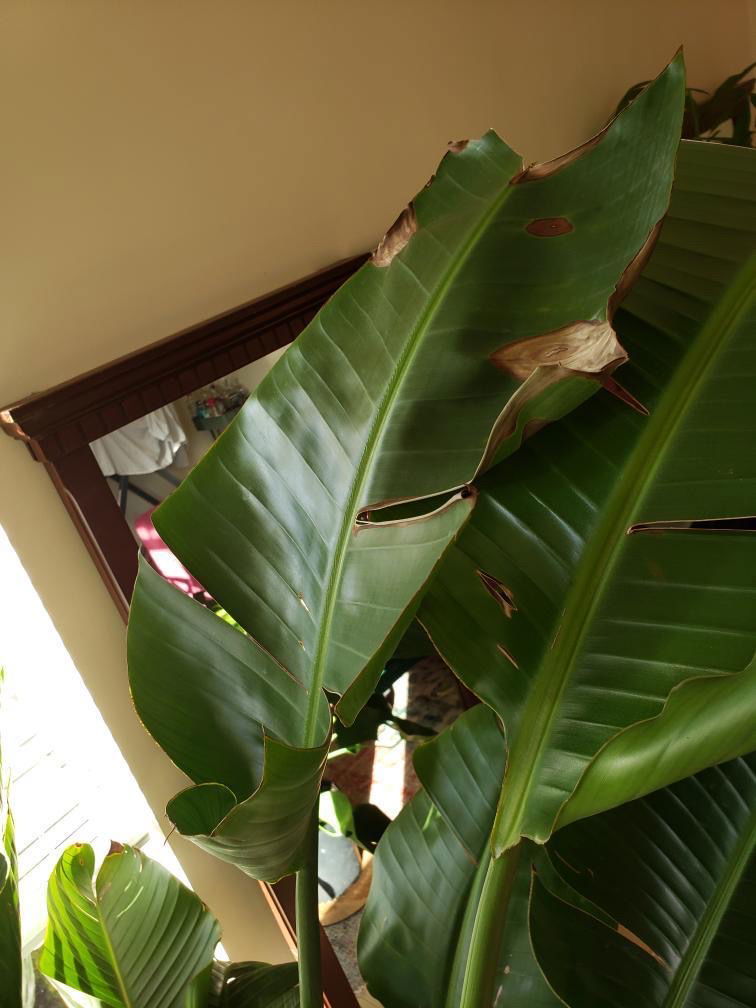 It's natural for a Bird of Paradise to have ripped leaves as they are designed to easily break in cases of high winds (or human damage).
It's natural for a Bird of Paradise to have ripped leaves as they are designed to easily break in cases of high winds (or human damage).
Dust the leaves regularly. Although this isn't too much of an issue, a build-up of dust particles can clog up the plant's pores, causing lowered light capturing-efficiency. Using a damp cloth with warm water, wipe the topsides of the leaves down once a month to keep levels down and improve growing conditions.
Origins
Strelitzia is part of the Zingiberales order, that holds genera such as Musa (Banana palms), Heliconia and Calathea, which bares significant similarities in their rhizomatous and foliar structures. The genus consists of five species, all of which originate from eastern South Africa. In the 1780s, the genus was named by Joseph Banks to mark the birthplace of Queen Charlotte in Mecklenburg-Strelitz, the wife of King George III. The most common species, the S. reginae, is the Latin phrase for 'of the queen' that commemorates the Queen's reign over England.
 The Distribution of Strelitzia.
The Distribution of Strelitzia.
Temperature
10° - 24°C (50° - 75°F).
H1c (Hardiness Zone 11) - Can be grown outdoors between late spring and summer throughout most of the UK while nighttime temperatures are above 8℃ (46℉). If you decide to bring the plant outdoors, don't allow it to endure more than an hour of direct sunlight a day as it may result in sun-scorch. Regularly keep an eye out for pests, especially when re-introducing back indoors.
Spread
Up to 2.5m in height and 1m in width if repotted annually. The ultimate height will take between 5 - 10 years to achieve, but can live for over twenty years in the right cultivation.
Strelitzia should produce one or two new leaves per year when grown in a bright, indirect location.
Pruning & Maintenance
Remove yellowed or dying leaves and plant debris to encourage better growth and improve the all-round appearance. Pruning must be done with clean scissors or shears to reduce the chance of bacterial and fungal diseases; remember to make clean incisions as too much damage can shock the plant.
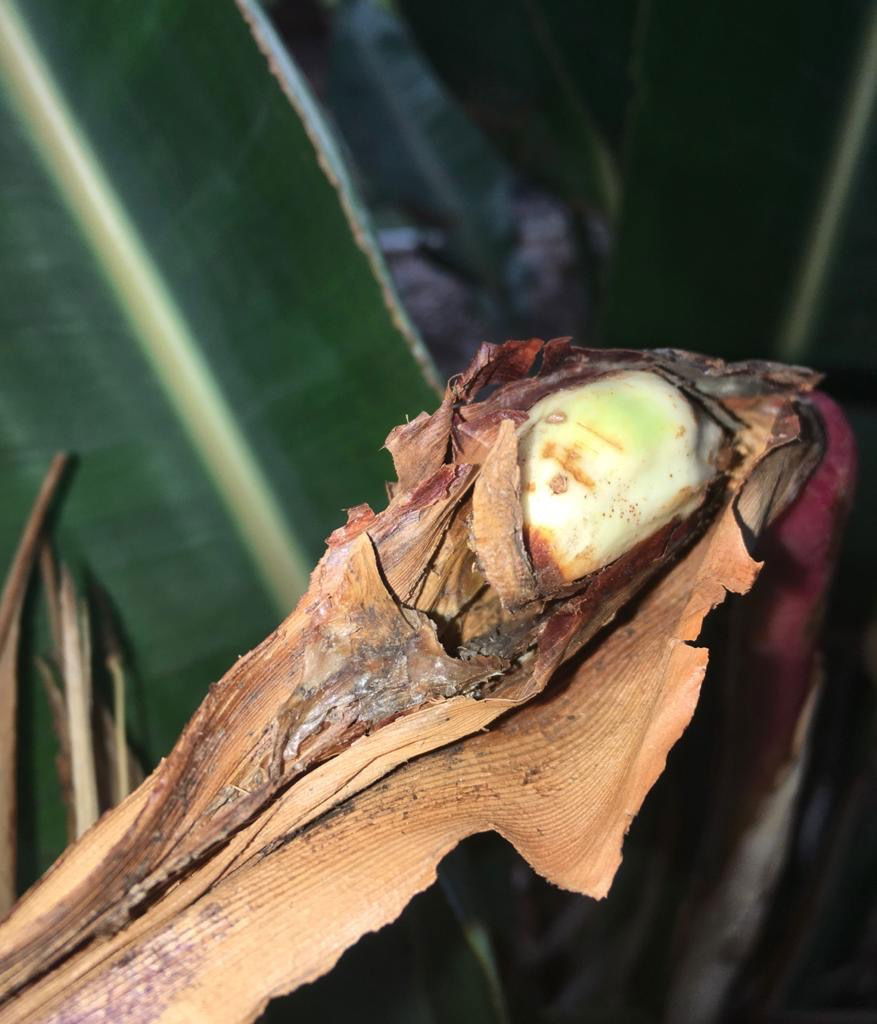
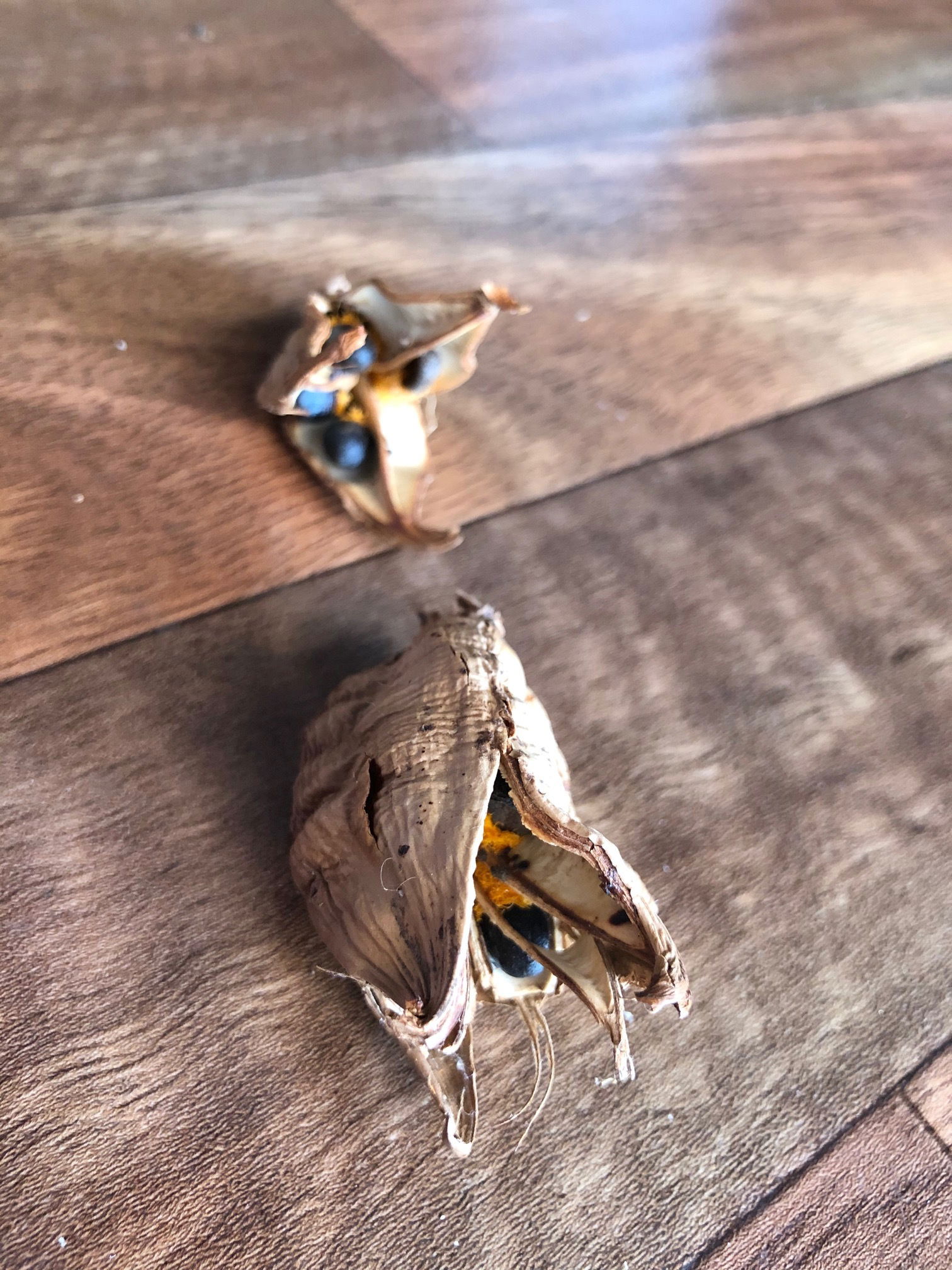 Fully matured pods with its viable seeds ready for germination.
Fully matured pods with its viable seeds ready for germination.
Propagation
Via seed & offset division.
Seed Germination (Moderate) - Remove the orange 'hair' and soak the seeds in lukewarm water for around 24hrs. The best soil to use is a 'Houseplant' labelled potting mix, however, multipurpose compost with added perlite and sand is just as good. Set the seeds around one inch into the potting mix, resisting the temptation to compact the soil. Maintain evenly moist soil and allow the excess water to freely drain from the pot's base to prevent water-logged conditions. The ideal location for successful germination is in a bright, indirect setting with temperatures above 18℃ (64℉) with bottom-heat. Keep the pot in a transparent bag to provide a stable level of humidity, along with longer lasting soil moisture. Germination may take up to a ten weeks, so don't discard any un-successful seeds until this threshold has been surpassed. Remove the bag once the seedlings produces its second leaf.
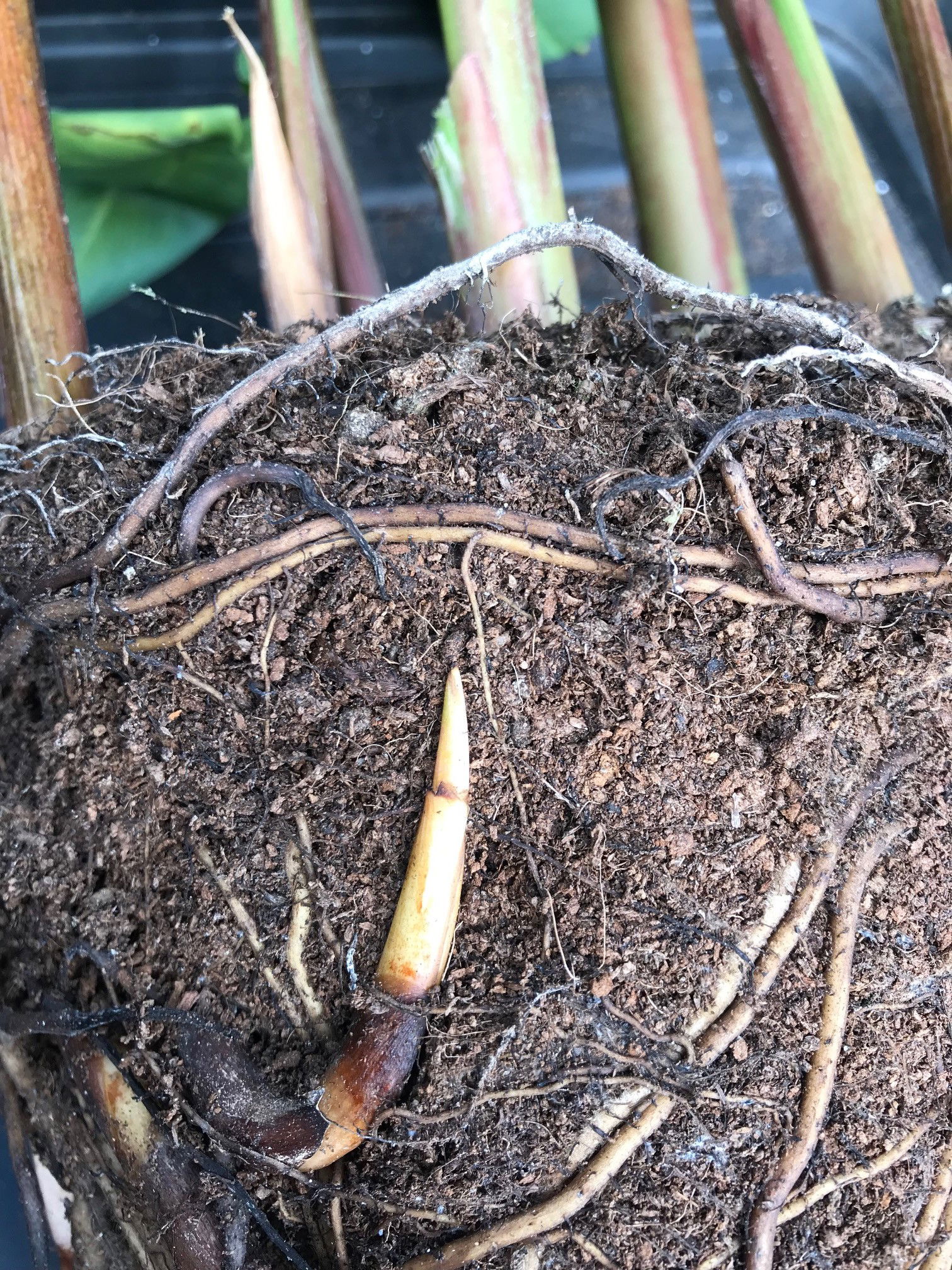 A rhizomatous growth (basal offset) that'll develop into its own plantlet once when above soil.
A rhizomatous growth (basal offset) that'll develop into its own plantlet once when above soil.
Offset Division (Pups) (Easy) - Separating the basal offsets into their own pot will not only expand your plant collection, but it'll also slow the process of becoming pot bound. The best time to divide is during the spring or summer, with the pup's height surpassing 10cm. Gently brush away some of the soil to gain better access to the pup's base, where its roots will be housed. While using a clean pair of secateurs or scissors, cut the cord with at least two root strands attached to its base. Set the pup in an appropriate-sized pot with adequate drainage and a 'houseplant' labelled compost. The ideal location would provide bright, indirect light and temperatures above 15℃ (59℉). Maintain evenly moist soil, allowing the top third to dry out in between hydrations. After a month or two, you'll be able to treat it like a matured specimen by using the care tips above.
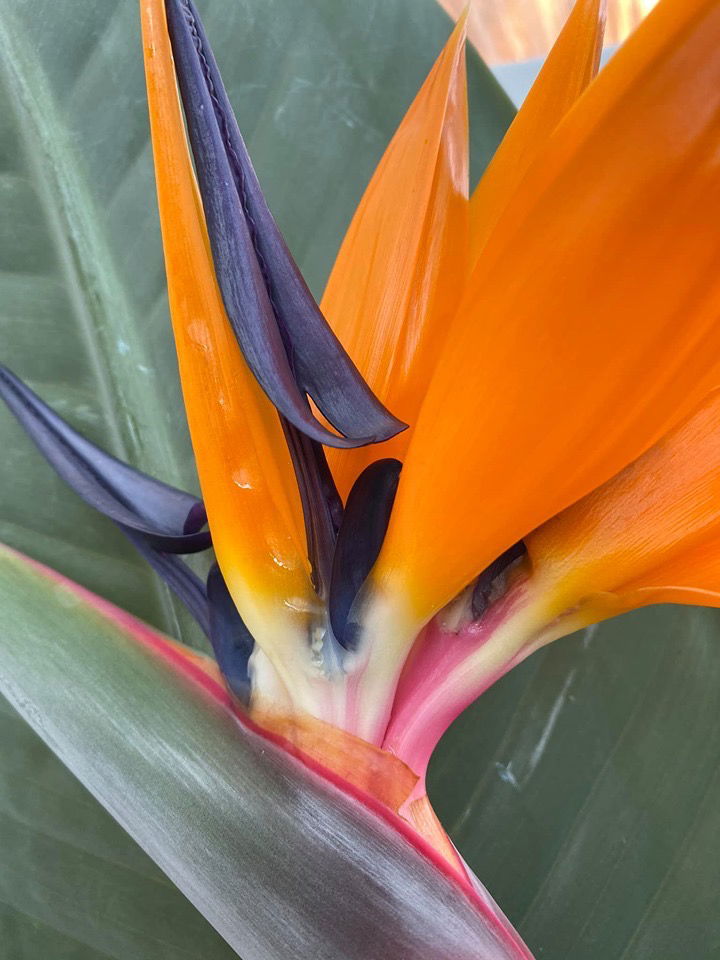 A close up of the bloom.
A close up of the bloom.
Flowers
Despite their readiness to flower in the wild, it'll take up to eight years for a specimen to bloom indoors. Its inflorescences largely resemble the Bird of Paradise, with a beak-like spathe housing a cluster of small flowers from the centre. Both the S. reginae and S. juncea sport a blend of oranges, blues and reds, while the S. nicolai, S. alba and S. caudata species are mostly white or grey.
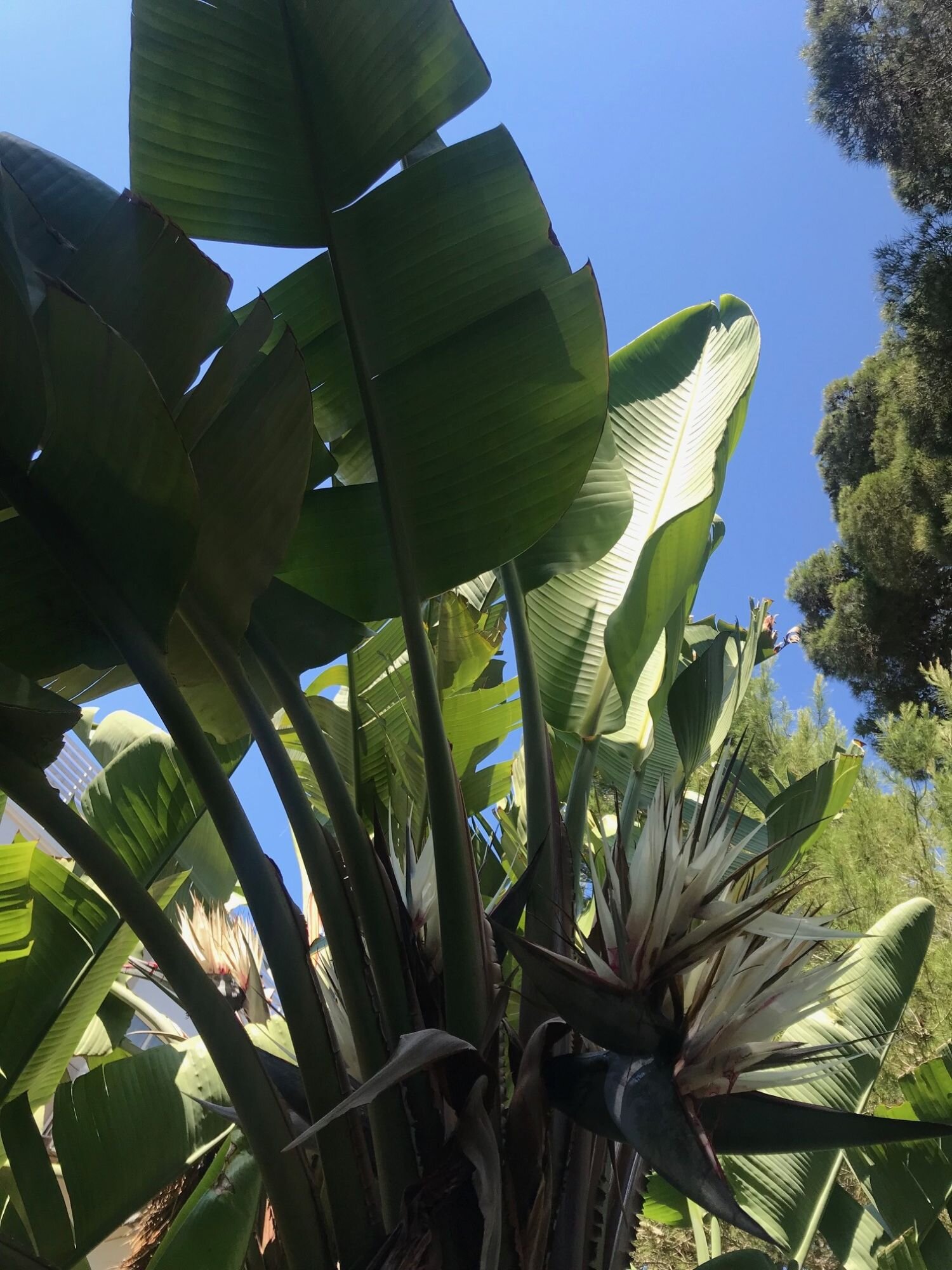 Strelitzia nicolai is another commercially grown houseplant worldwide that sports wide Banana-like leaves & white flowers. They are typically much taller than Strelizia reginae, too.
Strelitzia nicolai is another commercially grown houseplant worldwide that sports wide Banana-like leaves & white flowers. They are typically much taller than Strelizia reginae, too.
Repotting
All species of Strelitzia will develop large, finger-like tuberous roots that'll invade the pot within half a year. With this in mind, transplant annually in the spring, using either a 'Houseplant' or 'Cactus & Succulent' labelled compost and a larger pot; this is an excellent time to check the roots' condition, as well as dividing basal offsets. Click here to read our step-by-step guide on repotting.
Book a 1-to-1 video call with THE HOUSEPLANT DOCTOR™ if you'd like a personal guide to repotting your houseplant. This will include recommending the right branded-compost and pot size, followed by a live video call whilst you transplant the specimen for step-by-step guidance and answer any further questions!
Pests & Diseases
Keep an eye out for mealybugs, spider mites, scale, thrips & vine weevils. Common diseases are root rot, leaf-spot diseases, powdery mildew & botrytis - click here to learn more about these issues.
Toxicity
Bird of Paradise are classified as slight poisonous due to gastrointestinal irritants. If parts of the plants are eaten, vomiting, nausea and a loss of appetite may occur. Consumption of large quantities must be dealt with quickly - acquire medical assistance for further information.
Where To Buy
Online Stores. Some garden centres may stock Strelitzia from time to time, with the two most common species being S. reginae (blue & orange flowers with narrow leaves) and the S. nicolai (white flowers with wider Banana-like leaves).
Book a 1-to-1 Call with THE HOUSEPLANT DOCTOR™
If you need further advice with your houseplants, book an advice call with ukhouseplants' friendly and expert writer today! This can be done via a video or audio call on most apps, including Facebook, FaceTime & Skype. A ten-minute call costs £5.99 (US$7), or £15.99 for thirty minutes. You can ask multiple questions, including queries on plants, pests, terrariums, repotting advice and anything in between. Please consider supporting this service to keep ukhouseplants thriving!
